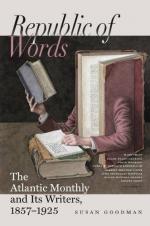A better taste, and a truer appreciation of the relative merits of works of Art, prevails in England now than at any previous time, and the recent acquisitions are distinguished not more by their number than by their intrinsic value. The National Gallery has at last begun to make its purchases upon a systematic plan, and is endeavoring to form such a collection as shall exhibit the historic progress of the various schools of painting. The late additions to it have been of peculiar interest in this view; including some very admirable pictures by masters whose works are rare and of real importance. Among them are very noble works of some of the chief earlier Florentine, Umbrian, and Venetian masters; especially a beautiful picture by Benozzo Gozzoli, (the Virgin enthroned with the infant Saviour in her arms and surrounded by Saints,)—a thoroughly characteristic specimen of Giovanni Bellini, (also a Virgin holding the Child,) in which the deep, fervent, and tender spirit, the manly feeling, and the unsurpassed purity of color of this great master are well shown,—and one of the finest existing pictures of Perugino, the three lower and principal compartments of an altarpiece painted for the Certosa at Pavia. We know, indeed, no work by the master of Raphael to be set above this. Two of the best pictures of Paul Veronese have also just been added to the National Gallery.
Still more important are the recent private purchases. The Duke of Northumberland procured in Rome, in 1850, the whole of Camuccini’s famous collection. It contained seventy-four pictures, and many of them of great value. Among them was a small, but precious picture by Giotto,—a beautiful little Raphael,—three undoubted works of Titian,—and, most precious of all, a picture, formerly in the Ludovisi collection, painted jointly by Giovanni Bellini and Titian. It is the Descent of the Gods to taste the Fruits of the Earth, half-comic in conception, but remarkable for the grace of some of its figures; the landscape is by Titian, and Dr. Waagen says, justly, that “it is, without comparison, the finest that up to that period had ever been painted,”—and we would add, few finer have been painted since.
Meanwhile Sir Charles Eastlake has obtained a picture by Mantegna, and another by Bellini, both of which rank very high among the works of these masters, and both in excellent condition. And Mr. Alexander Barker, whose collection is becoming one of the best selected and most interesting in England, has purchased several pictures of great value, especially one by Verocchio, the master of Leonardo da Vinci, which Dr. Waagen speaks of as “the most important picture I know by this rare master.” Mr. Barker has also made an addition to his collection so recent as not to be described even in this last volume of the “Art Treasures,” but which is of unsurpassed interest. He has purchased from the Manfrini Gallery at Venice, a gallery which has long been famous




